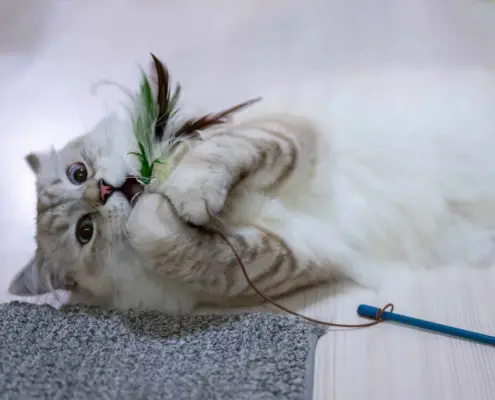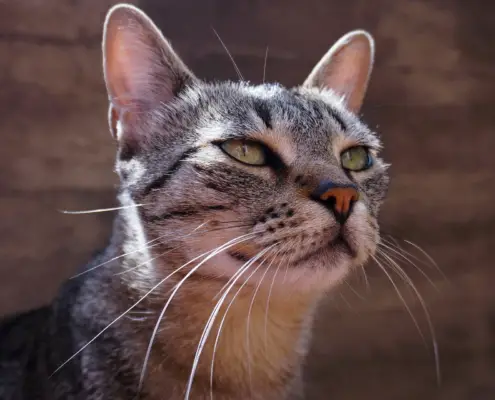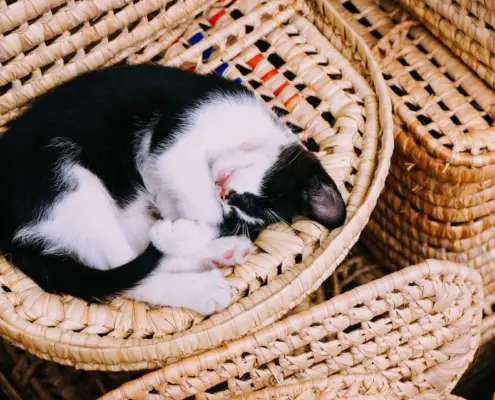
Cats are fascinating creatures with a variety of unique characteristics that make them exceptional hunters and fastidious groomers. One of the most intriguing features of a cat is its tongue. Unlike the smooth tongues of other animals, a cat’s tongue is covered in tiny, backward-facing barbs called papillae. These papillae serve multiple purposes and play a crucial role in a cat’s daily activities. Understanding the structure and functions of a cat’s tongue is key to appreciating the importance it holds in their lives.
Structure and features of a cat’s tongue
A cat’s tongue is a remarkable organ that consists of thousands of papillae. These papillae are made up of keratin, the same material found in human hair and nails. The papillae are not only sharp but also flexible, allowing them to move in various directions. This unique structure enables cats to perform a wide range of tasks, from grooming their fur to capturing prey.
The papillae on a cat’s tongue are curved backward, resembling tiny hooks. This design helps to trap loose hair and debris while grooming, preventing it from being ingested. Additionally, these barbs aid in distributing natural oils produced by the cat’s skin, keeping their fur clean and well-maintained. The papillae also play a crucial role in a cat’s ability to lap up water efficiently, forming a column of liquid that can be easily ingested.
Importance of a cat’s tongue in grooming
Grooming is an essential aspect of a cat’s daily routine. It serves not only to keep their fur clean and free of tangles but also to regulate body temperature and promote social bonding. A cat’s tongue plays a vital role in this grooming process. The backward-facing barbs on their tongue act as a built-in comb, effectively removing dirt, dead skin cells, and loose fur from their coat.
As cats lick themselves, the papillae on their tongues remove loose hair, which is then swallowed. The barbs on the tongue help to move the hair towards the back of the throat, where it forms into hairballs. While the formation of hairballs may seem unpleasant, they serve an essential purpose in a cat’s grooming routine. Hairballs help to prevent the accumulation of hair in the digestive system, reducing the risk of blockages.
How a cat’s tongue helps in hunting
Cats are natural-born hunters, and their tongues play a significant role in their hunting prowess. The rough texture of a cat’s tongue aids in grooming, but it also serves a crucial purpose when it comes to capturing prey. When a cat licks its fur, it not only removes dirt but also aligns its fur, making it more aerodynamic for swift movements while hunting.
The barbs on a cat’s tongue are instrumental in removing flesh from the bones of their prey. As a cat licks, the papillae act like miniature hooks, helping to scrape off every morsel of meat. This efficient cleaning mechanism allows cats to consume their prey thoroughly, leaving no waste behind. The unique design of their tongue gives cats a distinct advantage when it comes to feeding on small animals.
The unique cleaning ability of a cat’s tongue
A cat’s tongue possesses a cleaning ability that is unparalleled in the animal kingdom. The combination of the papillae and saliva creates an efficient self-cleaning mechanism. As a cat licks its fur, the barbs on its tongue trap loose hair and debris, while the saliva works to dissolve any dirt or greasy substances. This cleaning process is not only effective but also caters to a cat’s natural instinct for cleanliness.
The papillae on a cat’s tongue are also responsible for removing parasites from their fur. When a cat grooms itself, the barbs can catch and dislodge any fleas or ticks that may be present. This self-grooming behavior helps cats to maintain good hygiene and prevents infestations. The unique cleaning ability of a cat’s tongue is a testament to their self-sufficiency and adaptability in the wild.
Fun facts about a cat’s tongue
- A cat’s tongue is covered in approximately 290 papillae per square centimeter.
- The papillae on a cat’s tongue are sharper than a human’s toothbrush bristles.
- A cat’s tongue is so rough that it can strip paint off walls.
- The barbs on a cat’s tongue are oriented towards the back of their throat, ensuring that prey moves in one direction.
- A cat’s tongue is not only used for grooming and hunting but also for showing affection. Gentle licks from a cat are a sign of love and trust.
Common tongue-related health issues in cats
While a cat’s tongue is a marvel of nature, it is not immune to health issues. One common problem that cats may face is papillitis, which is the inflammation of the papillae on the tongue. This condition can cause discomfort and difficulties in eating and grooming. Another tongue-related issue is glossitis, characterized by the swelling and inflammation of the tongue. Glossitis can be caused by allergies, infections, or other underlying health conditions.
It is important for cat owners to monitor their feline companions’ tongues for any signs of abnormalities. If a cat’s tongue appears red, swollen, or if they show signs of discomfort while eating or grooming, it is advisable to consult a veterinarian. Regular dental care, such as teeth brushing and routine check-ups, can help prevent tongue-related health issues and ensure a cat’s overall well-being.
Tips for cat owners to maintain a healthy tongue
Caring for a cat’s tongue is an integral part of their overall grooming routine. Here are some tips to help cat owners maintain a healthy tongue for their feline friends:
- Regular grooming: Regularly brushing a cat’s fur helps to remove loose hair and prevents excessive shedding. This reduces the amount of hair ingested, minimizing the risk of hairballs.
- Dental hygiene: Regular dental care, such as brushing a cat’s teeth, can prevent the buildup of plaque and tartar, reducing the risk of oral health issues that may affect the tongue.
- Balanced diet: Providing a balanced and nutritious diet ensures that a cat’s overall health, including their tongue, is maintained. Feeding high-quality cat food can prevent deficiencies and promote a healthy tongue and oral cavity.
- Environmental enrichment: Providing cats with stimulating toys and scratching posts helps to satisfy their natural grooming instincts. This can reduce over-grooming, which may lead to tongue-related issues.
By following these tips, cat owners can contribute to their feline companions’ overall well-being and maintain a healthy tongue for their beloved pets.
Research and studies on cat tongues
The unique structure and functions of a cat’s tongue have captured the interest of researchers and scientists. Several studies have been conducted to better understand the intricacies of a cat’s tongue and its role in their daily activities. Researchers have used high-speed cameras and microscopic imaging techniques to observe and analyze the movements and mechanisms of a cat’s tongue.
These studies have revealed fascinating insights into the efficiency of a cat’s grooming process and the remarkable cleaning ability of their tongue. The findings from these studies have not only deepened our understanding of cats but also have potential applications in various fields, such as robotics and material science.
Conclusion
A cat’s tongue is a marvel of nature, providing them with unique abilities that aid in grooming and hunting. The backward-facing barbs on their tongue serve as a built-in comb, ensuring their fur is clean and free from tangles. These barbs also help cats to strip flesh from the bones of their prey, making them efficient hunters. The rough texture of a cat’s tongue, combined with their saliva, creates a self-cleaning mechanism that keeps them hygienic.
Understanding the importance of a cat’s tongue in their daily activities allows us to appreciate the incredible adaptations that make cats such fascinating creatures. By maintaining a healthy tongue through regular grooming, dental care, and a balanced diet, cat owners can contribute to the overall well-being of their feline companions. As research continues to uncover more about the intricacies of cat tongues, we gain a deeper appreciation for these remarkable animals and the unique abilities they possess.
If you enjoyed my article, I would appreciate you sharing it with your network.

Sima Ndlebe
Sima writes for CatBuzz. He is interested in Cats, Health and Fitness, and Entrepreneurship.
Published: 31 October 2023



